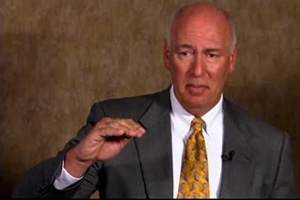Learn From the Dental Industry's TOP LEADERS!
Sit Chairside withDr. Dennis WellsCreator ofDURAthin® Prepless Veneers- OR -
|
The Psychology of Cosmetic Dentistry-Patient/Doctor/Team Interaction and Desired Outcomes
DescriptionThis presentation will focus on understanding the personality dynamics that will affect your interaction with your patients. Rapid assessment procedures to help you utilize this information in your practice will be presented as well as techniques to enhance rapport, modify expectations in a positive direction and screen out inappropriate candidates for cosmetic procedures.
Last Reviewed: 07/29/2012 Disclaimer: No commercial support was received for this course. Objectives
OutlineI. The importance of understanding yourself and your patient. ReferencesBarnes D. Communicating value: how to get more out of cosmetic dentistry. Dent Today. 2001 Dec;20(12):82-3. Meskin LH. A gentle touch is not enough. J Am Dent Assoc. 1998 Feb;129(2):136, 140, 142. Sheets CG., Levinson N. Psychodynamic factors contributing to esthetic dental failures. Compendium. 1993 Dec;14(12):1610, 1612, 1614-20 |
 Submitting...
Submitting...


 FAGD/MAGD Credit Approval does not imply acceptance by a state or provincial board of dentistry or AGD endorsement 7/31/2018 to 7/31/2021 Provider ID# 317928
FAGD/MAGD Credit Approval does not imply acceptance by a state or provincial board of dentistry or AGD endorsement 7/31/2018 to 7/31/2021 Provider ID# 317928